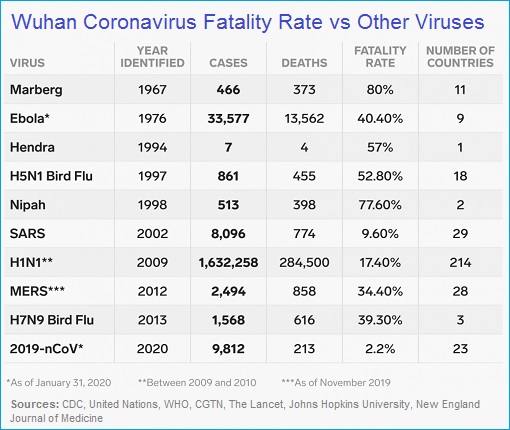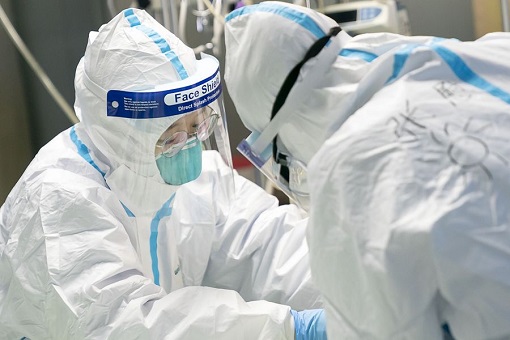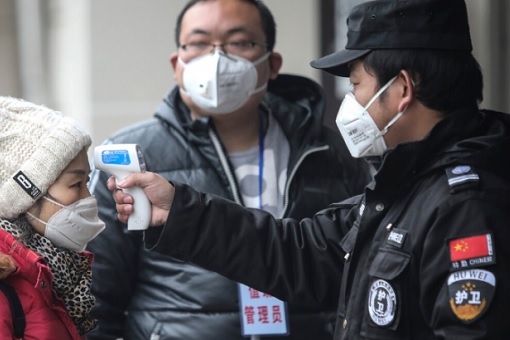The World Health Organization (WHO) has declared the Coronavirus outbreak a global health emergency after the first person-to-person transmission of the virus was reported in the U.S. The latest designation means that international public-health authorities now consider the virus, which has killed 305 people so far (including the first death in the Philippines), a significant threat beyond China.
Since 2005 WHO had invoked that designation five times. The first was during the H1N1 swine flu (2009), the 2014 polio, the Ebola and Zika (2016) and another Ebola outbreak in 2019. As the latest epidemic spread, the Pentagon is preparing military facilities to quarantine up to 1,000 people returning from overseas to control and contain the virus.
Over the last 3 weeks alone, scientists have published over 50 studies on the virus, which is the 7th known member of the Coronavirus family. Even though the Coronavirus, which carries the scientific name “2019-nCoV”, has the least fatality rate as compared to other viruses, including SARS, MERS, Ebola and H5N1 bird flu, people continue to panic because it was highly infectious.

It didn’t help the situation that the epidemic broke out just as more than a billion Chinese were about to celebrate the 2020 Chinese Lunar New Year. It got worse when about 5 million residents reportedly had already left Wuhan, the central Chinese city where the Coronavirus was believed to have originated, before it was placed under lockdown.
China is increasingly facing isolation as countries around the world – either affected or otherwise – announce travel restrictions where airlines temporarily suspend flights to and from the country. Despite Beijing’s best effort to contain the epidemic, sadly, the crisis has also exposed the ugly side of the people – racism and hostility towards east Asians, especially the Chinese people.
In reality, the Chinese government has improved tremendously since 2003, when it was accused of trying to cover up a major outbreak of Severe Acute Respiratory Syndrome (SARS). The SARS epidemic had killed 774 people over the nine-month outbreak (from Nov. 1, 2002, through July 31, 2003) that reached nearly 30 countries.

Beijing took four months to disclose the 2003 SARS outbreak after its first initial discovery. This time, nearly 17 years later, the Chinese government had taken less than a month. The Coronavirus has brought back painful memories that left the country’s authorities – both the Chinese Communist Party and health authorities – struggling to rebuild public trust.
To begin with, foreign experts have acknowledged the speedy disclosure of information about the genetic, molecular structure of the virus and the way it has spread. Li Bin, vice minister at the National Health Commission, said Beijing had learned from its experiences with SARS and was now sharing all relevant data with international stakeholders, including the World Health Organization.
Even during the SARS epidemic, it wasn’t too much about a cover up, but rather the embarrassment that China was inexperienced in combating the virus at such a scale. Fearing accusation of incompetency and inefficiency, local governments were also reluctant to take responsibility, let alone sharing accurate information, for the rapid spread of SARS infections.

To make matters worse, when China saw its first case of SARS in 2002, the disease detection system was so out-dated that health officials were still reporting infectious-disease incidences by filling out cards by hand before mailing or faxing them to a central office. The response time was extremely slow as data collection and collaboration were unbelievably ancient.
After the 2003 SARS epidemic, the Chinese government was determined to improve its disease surveillance system. Leveraging on information technology and internet, the ministry of health built what was arguably the world’s largest internet-based disease reporting system – China Information System for Disease Control and Prevention (CISDCP).
Prior to CISDCP, hospitals or clinics would submit case-report forms to their county or district CDC. The local CDCs would then submit report summaries once a month up the chain to the national CDC. Even then, there were 4 levels of CDCs in China: county-level, prefectural-level, provincial-level, and national-level – each having their own duties and of course, red-tapes.

With the CISDCP, hospitals and clinics instantly and directly report through the internet, allowing public-health officials at the national level to access real-time information on diseases so that they can immediately identify disease outbreak. CISDCP also included a new “case-based” reporting system, which enables immediate identification of the nature and location of a particular disease outbreak.
So when three people visited a hospital in Wuhan with the same pneumonia-like symptoms, the doctors entered the patients’ basic particular (age, sex, and occupation), geographical locations (down to specific villages and households), demographic information, and infection data into the National Infectious Diseases Monitoring Information System Database.
When the system indicates a higher-than-normal rate of illness in a particular region, it will raise the necessary red flags and prompt analysts’ attention for additional tests or actions. That’s how China discovered within a week of the first reports that the feverish, coughing patients in Wuhan had been infected with a new type of Coronavirus not seen before.

Raina MacIntyre, head of the biosecurity research programme at the Kirby Institute in Sydney, told Reuters – “China … has developed excellent disease surveillance systems since SARS, including real-time emergency department surveillance for severe acute respiratory infections, so this will help with the rapid identification of new cases.”
The surveillance system managed to detect and effectively controlled subsequent outbreaks such as the H7N9 influenza in 2009 and H1N1 influenza in 2013, as did an imported wild poliovirus type-1 (WPV1) in 2011. The wild poliovirus was traced to Hotan Prefecture, Xinjiang Uygur Autonomous Region, and 3.8 million children aged under 15 years were vaccinated – ending the outbreak in 1.5 months.
China’s database and medical-surveillance systems have gone through improvements for over 50 years. The first version was created as far back as in 1959 after the H2N2 Asian flu pandemic that originated in China in early 1956 and lasted until 1958. The category-2 influenza-A virus killed an estimated 2 million people (based on WHO data) around the world, including 69,800 in the U.S. alone.

Still, international human rights were not impressed with the Chinese government’s surveillance system and collection of medical data. They argued that the mandatory biometric-data collection programs to collect DNA, iris scans, fingerprints and blood types from the 20-million citizens in the Xinjiang province is a gross violation of international human rights.
Other Articles That May Interest You …
- Coronavirus – China’s Massive Lockdown Appears To Have Contained The Outbreak … For Now
- Only In China – The World’s Largest Insect Farm, Producing 6 Billion Cockroaches Annually
- Japan Might Have An Easier Way To Detect Cancer – From Urine Samples
- Food Scandal! – Subway’s Chicken Sandwich Contains Only 50% Chicken
- Fake Eggs Is Not Urban Legend – Here’s How To Make Them
- Bacon, Hot Dog, Ham, Sausages Makers Rubbish Cancer Report
- Great News!! – Eating 2 Chocolate Bars “A Day” Keeps The Heart Attack Away
- China’s Latest Food Scandal – Rotting 40-Year-Old Meat For Dinner Tables
- Exposed! Food Scandal – Hong Kong, Macau & Taiwan Use “Gutter Oil”
- Here’re Dumbest & Silliest Tweets About Ebola Money Can Buy

|
|
February 3rd, 2020 by financetwitter
|


|

|

|

|

|

|




























Currently, the coroner virus is a highly discussed virus that has many lives. Which is now spread from China to Wuhan city in many countries of the world.
In this video we have tried to give all information about coronary virus. I hope you all benefit.
Click the link to watch the video.